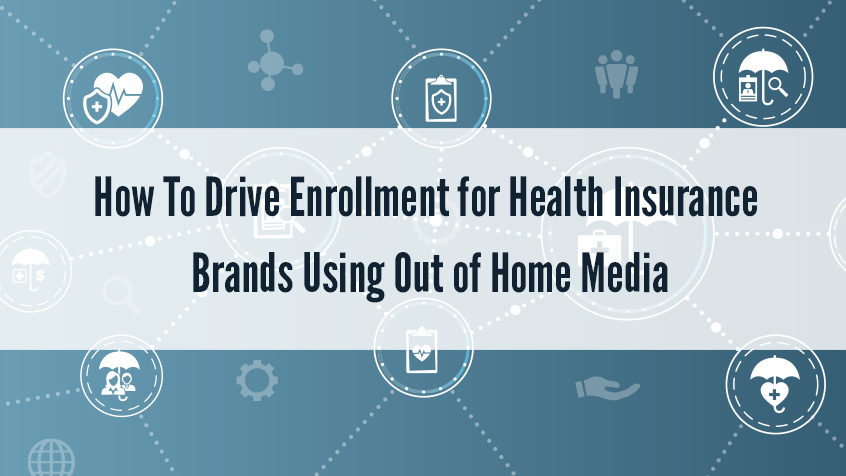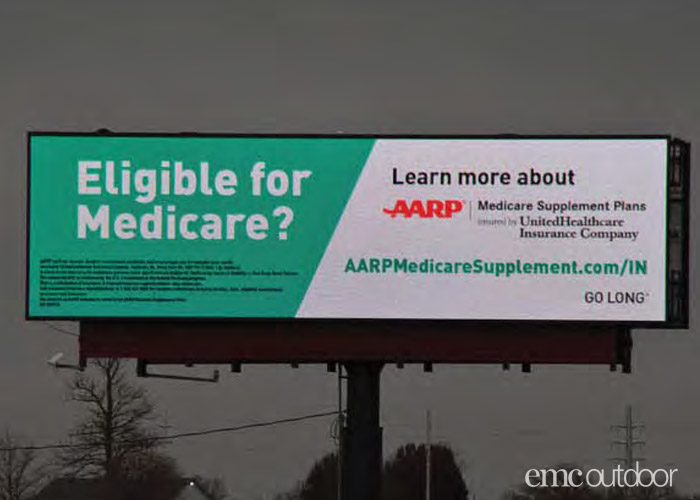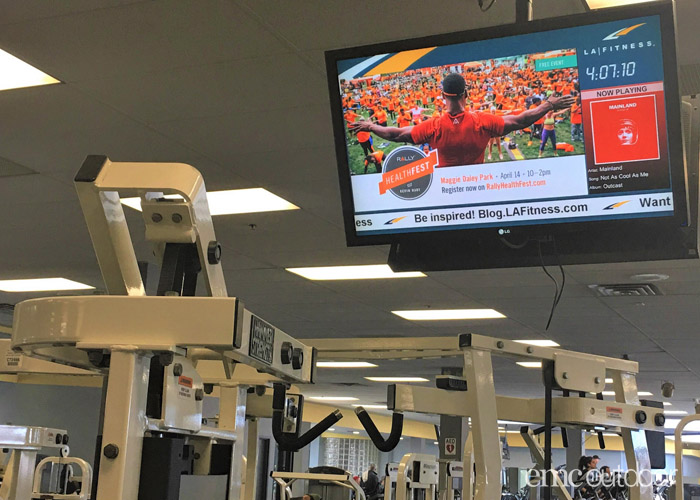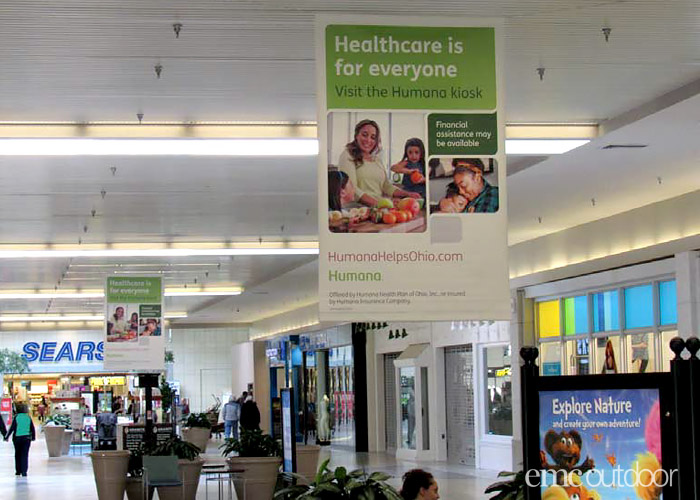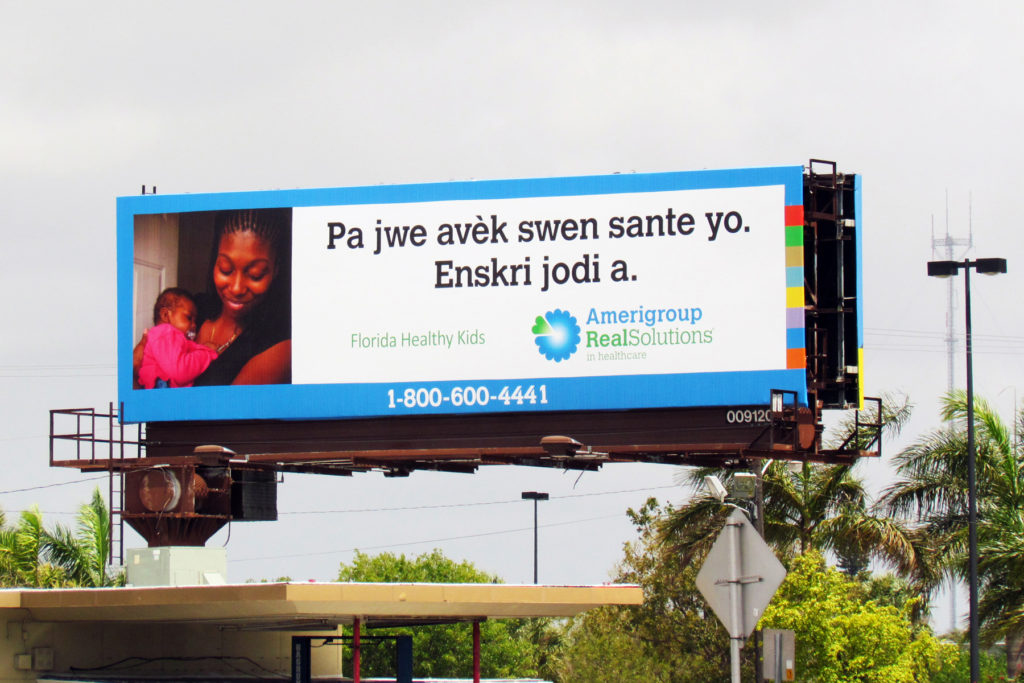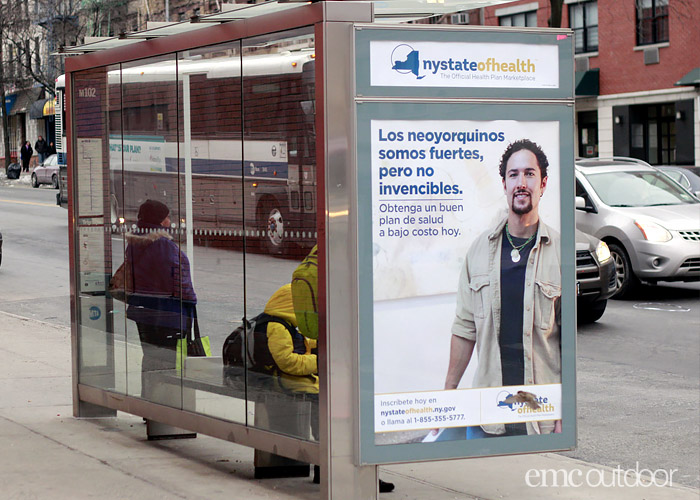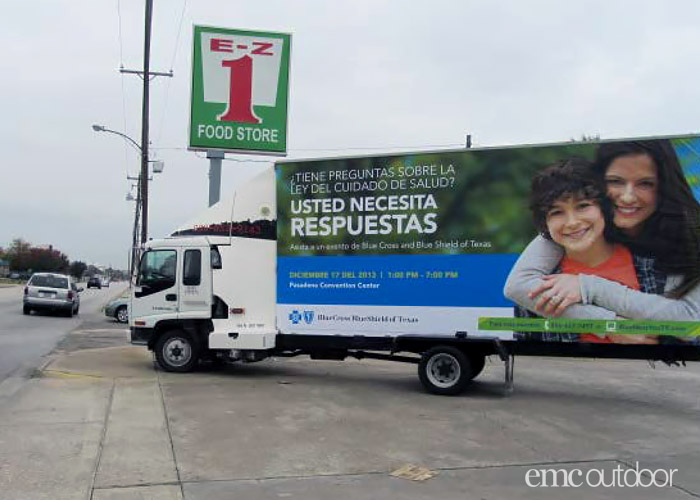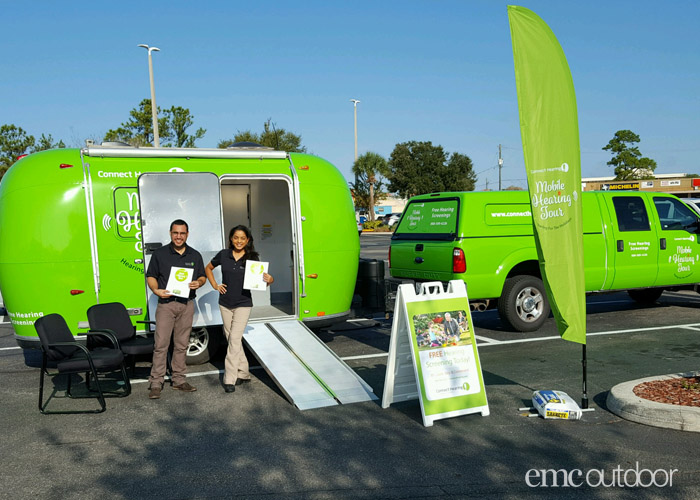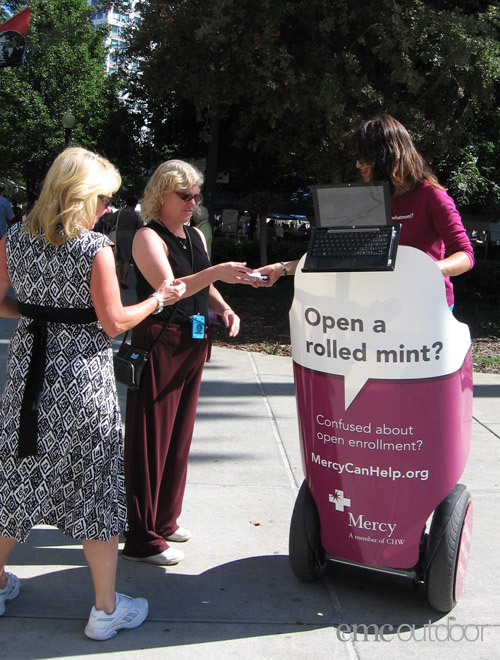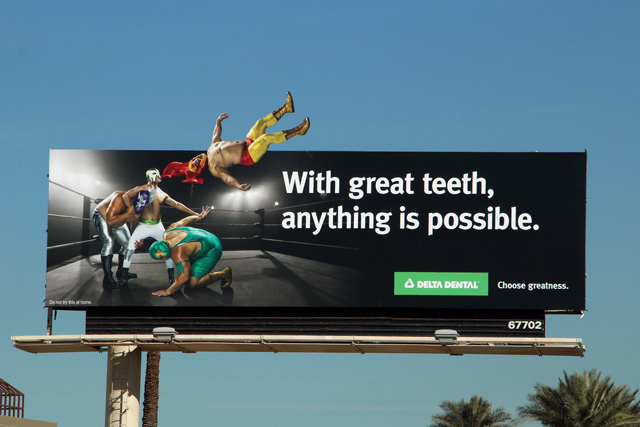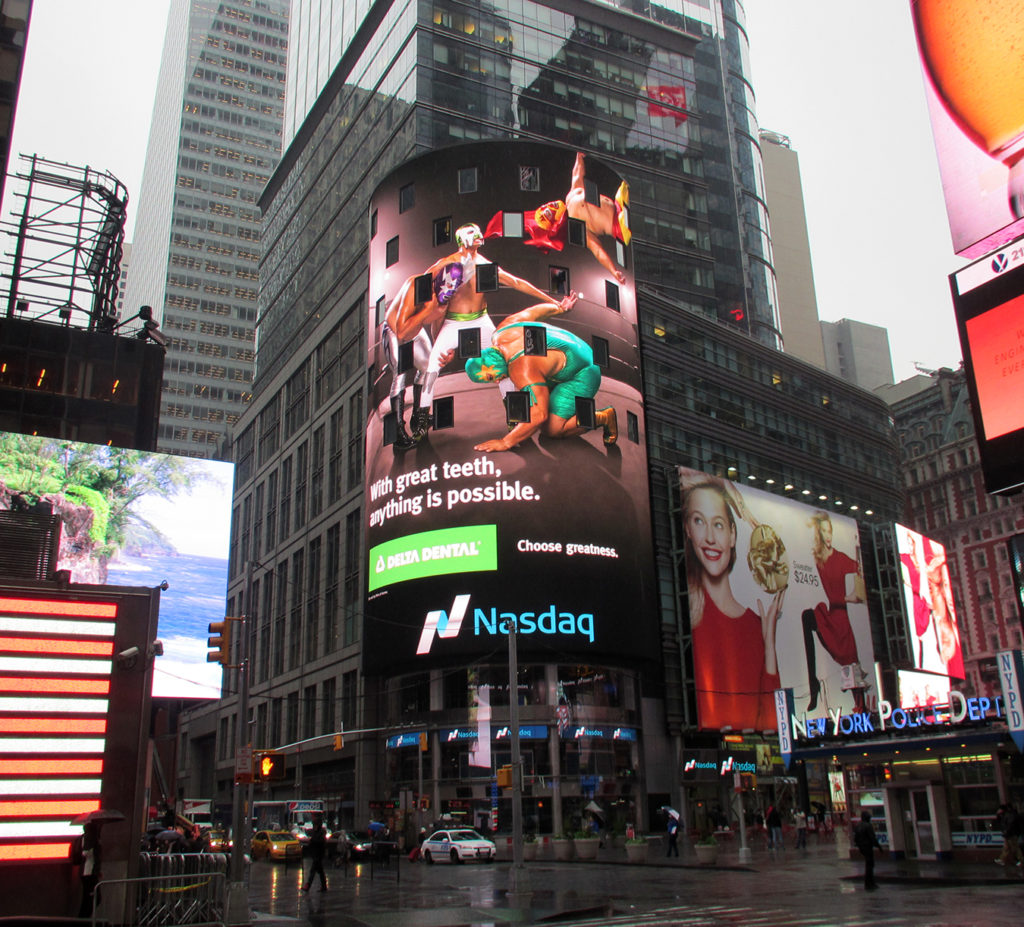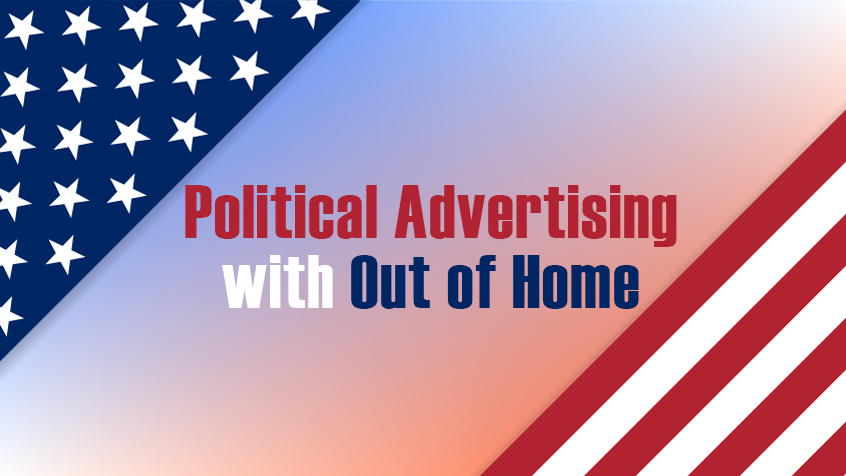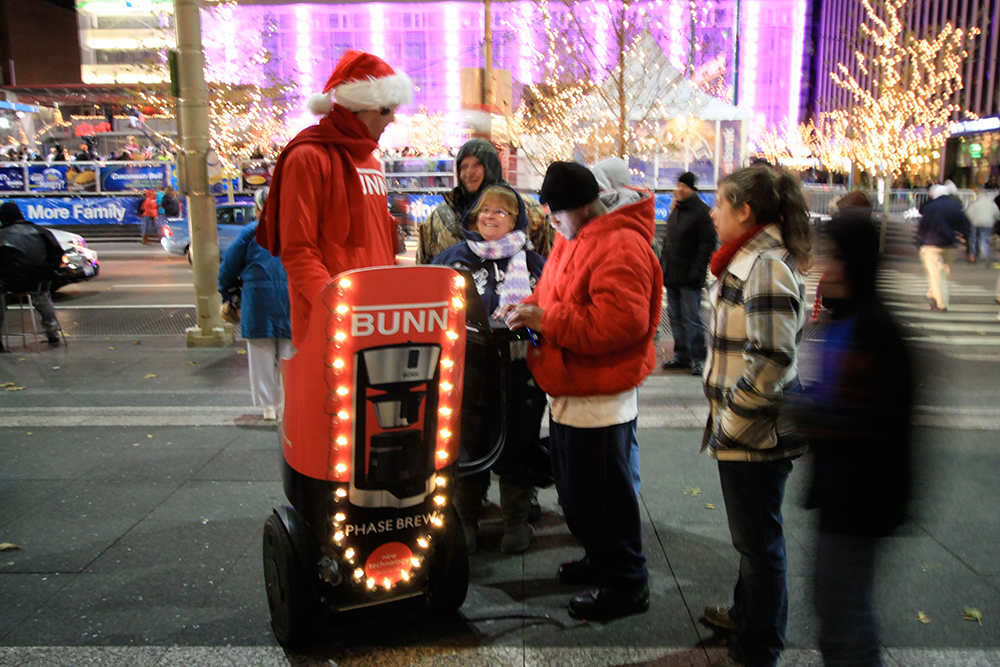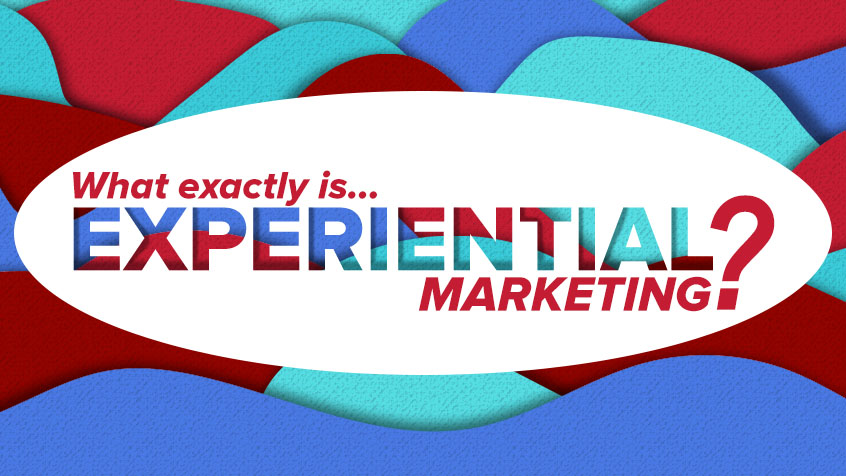Marketing for health insurance brands can be extremely challenging. They face several different complex and unique hurdles to acquiring new subscribers. So how can a health insurance brand stand out in the marketplace while facing stiff competition? How can they evaluate what channels are most effective at delivering ROI?
Health insurance companies typically face three primary issues. Health insurance is not always easy to grasp, the variety of available products and different audiences make delivering the right message more complex, and the public tends to have a negative perception of insurers. At the same time, they need to know how to reach the right consumers, how to drive traffic to their website for more information and quotes, and how to retain their existing clients with a message that stands out among the competition.
Out of home provides the right channels to address these issues. It’s engaging, focuses on a relevant local audience, and is more cost effective than many alternatives. Of course, health insurance marketers must know how to implement and maximize it for their brand.
How Out of Home Can Help Reach the Right Audience
Successful marketing plans for any health insurance brand will hinge on reaching the right audience, with the right message, at the right time. In most cases, consumer groups will evaluate their options based on many factors, like price, features, convenience, physician networks, prescription drug coverage, out of pocket costs, premiums, and more. Out of home, from traditional and lifestyle media to experiential marketing, allows for accurate messaging in a targeted fashion.
The Power of Targeted Marketing
Finding the right audience is crucial for any health insurance marketer. Once an audience segment is identified, it is important to determine what characteristics matter the most to that audience base. These can range from price and convenience to the doctor’s network within the coverage area, premiums paid, extent of coverage, and more.
The next step is to find a way to target this group without wasting money on lost impressions. Erroneously placed messaging could result in a missed impression delivery opportunity or worse, an irreversible negative perception of the brand.
Maximizing Targeting Options
There are three key factors that play important roles in targeting, and that must work together to ensure accuracy and effectiveness in a campaign.
Location is important for targeting as messaging can be placed in cherry picked zip codes or neighborhoods based on target demographic profiles. An alternate tactic is to target sub-areas that are either under-enrolled or considered a home market with healthy enrollment for renewal and retention campaigns.
The variety of OOH media choices allows for lots of flexibility in targeting audiences. For example, a Medicare provider might consider paratransit buses that reach an older demographic and their caregivers. Alternatively, a Medicaid provider may be more inclined to consider laundromats and convenience stores, which reach a lower income demographic. Placements in fitness clubs, pharmacy bags and doctor’s offices reach an audience when the topic of health insurance and general health is top of mind.
Creative and messaging can be adjusted to match the language of a target audience and feature imagery to which they can relate. Through digital placements, marketers can schedule different messages for different days and times based on the behavior of various audience segments. New tools like the Geopath Insights Suite allow for targeting beyond simple demographics, down to behavioral levels. They allow for targeting based on where audiences go during the day, not just where they live.
Delivering to the Right Audience
Health insurance, at its core, is a personal topic. It’s not something that comes up in small talk with a stranger. From a marketing standpoint, brands must understand that intimacy, and express an understanding of that to an audience. Delivering the right message, in the right location, will help build that trust.
Leverage Out of Home to Drive Online Traffic
For most health insurers, the website is the hub of the marketing and conversion activities. Here, clients review plans, browse options, and sign up for a quote. Of course, all that can only happen if audiences are driven to the website.
Out of home can improve the effect of digital ads to drive web traffic. According to NeuroInsight, consumers are 48% more likely to click on a mobile ad if they’ve been exposed by OOH first. Similarly, according to Nielsen’s OOH Online Activation Survey, out of home media indexes nearly four times the amount for search activations than should be expected given its typically low percentage of budget. From the 2017 report, we see OOH media at 7% of a media budget generates 26% activation share. The obvious takeaway is that it pays to link OOH and digital marketing channels as closely as possible.
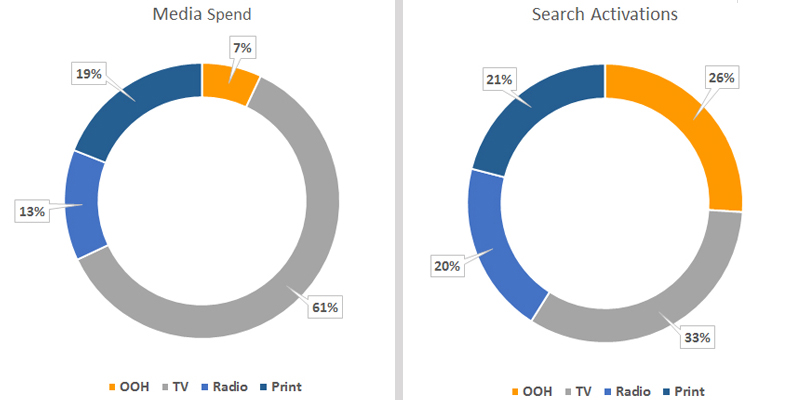
Source: Nielsen, OOH Online Activation Survey, 2017.
When linking OOH and digital, ensure consistent creative—message and design—and targeting—like, geofencing digital ads around OOH placements. This second point has an additional benefit—direct attribution of out of home placements in driving online traffic, leading to a better understanding of ROI. Ultimately, that data can help improve the effectiveness of the overall marketing strategy, increasing site traffic in the process.
Out of Home Marketing to Retain Existing Clients
Never underestimate the power of OOH as a channel to drive retention of existing clients. OOH can support a strategy worthy of this key KPI for the health and survival of an insurance brand. Of course, this can be an extremely challenging effort.
Lining up a marketing budget too closely to client retention can lead to a perception of wasteful spending among those clients. Out of home can help walk this delicate line with targeted messaging tactics.
Focusing on areas with a strong subscriber base can use positive messaging and tell stories that reflect consumers’ experiences. This might require more than a billboard, so consider experiential marketing. Experiential activations can deliver a more in-depth message to an existing client that will strengthen and solidify that relationship. Experiential can introduce opportunities for patient engagement, network expansion, website updates, and cost management.
The key in these events is not to get more sign ups. Instead, make it a goal to provide a fun, positive, and memorable experience to the audience. Over time, this engagement builds trust and loyalty that will be invaluable when the time for renewal comes.
The Delta Dental Example
Our client, Delta Dental, needed to incorporate OOH as part of its national campaign in more than 20 individual markets. The purpose of the campaign was to drive awareness, website traffic, and sign ups.
Delta’s OOH campaign, coupled with digital ads, effectively addressed the campaign goals. Post-wave research showed that the presence of OOH advertising roughly doubled the overall awareness lift of the campaign, despite a 10:1 budget disadvantage compared to the competition.
Out of home played a significant role throughout. In fact, we measured a 6% lift in total awareness in markets that included OOH, compared to those that did not. In total, the campaign drove nearly 1.1 million landing page visits, with a strong click-through rate of 0.28%—nearly three times the industry average.
Marketing a health insurance can be challenging, but it doesn’t have to be impossible. Out of home ads can help reach the right consumers, drive traffic online, and improve retention of existing clients. Link OOH with digital ads, get the targeting right, and adjust messaging based on the audience. Marketers who can implement this marketing strategy will be able to leverage out of home for sustained success in this competitive landscape.
We get health insurance and healthcare marketing. Tell us about your brand’s challenges and let us know how we can help!

